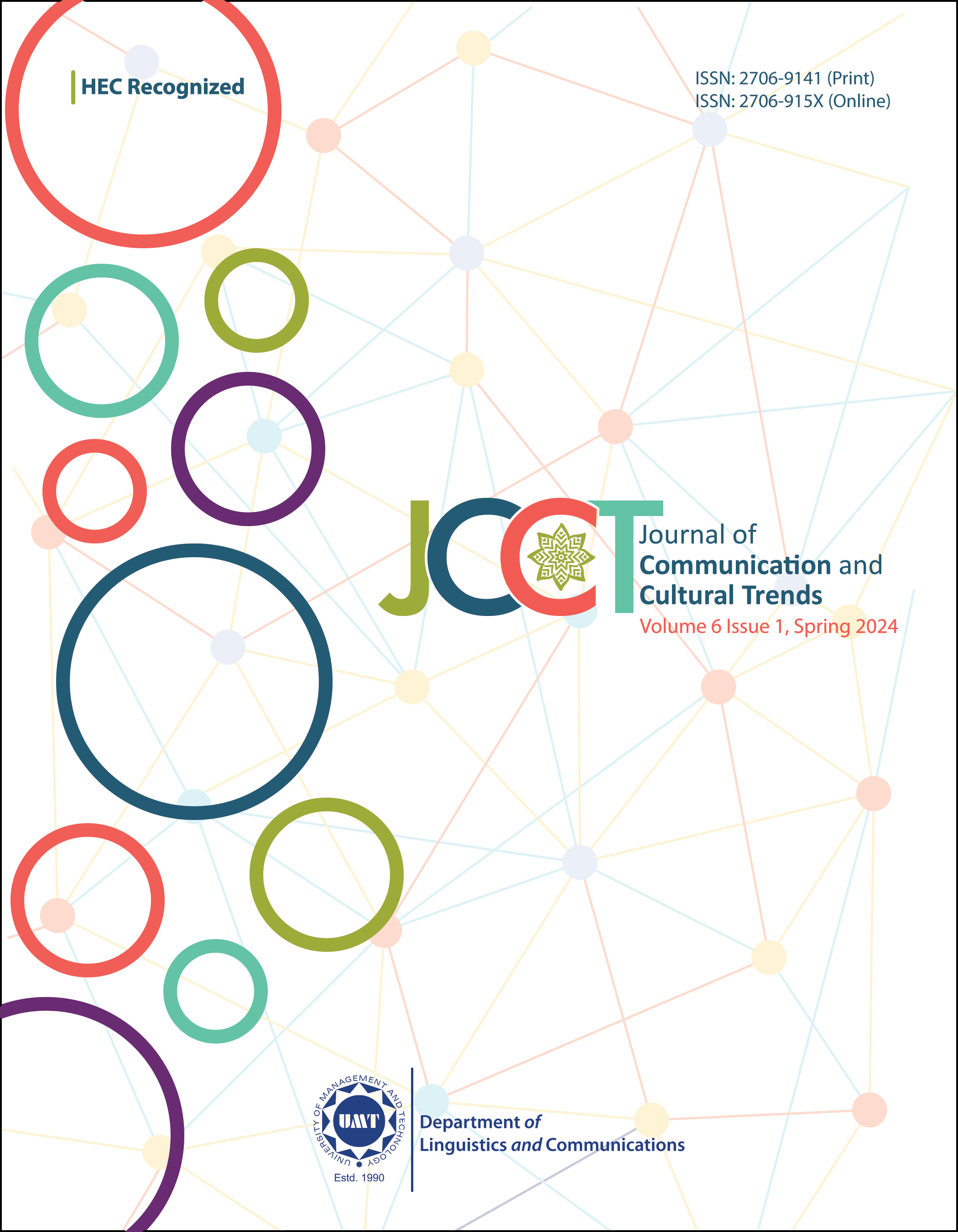Lexical Stylistics Analysis of Surah Ar-Rehman and its Urdu Translation
Abstract
 Abstract Views: 0
Abstract Views: 0
Like all other religious scriptures, the Holy Quran is a sacred book written in Arabic language and read worldwide by people of diverse languages. Moreover, the Holy Quran has also been translated into multiple languages by numerous scholars to cater the needs of its readers. The translations of Quran into diverse languages have employed various methods, ranging from word-to-word translation to interpreting the text's meaning. Multiple translations of Quran are available in Urdu language as well. While, initially, style was not a significant consideration when translating a text into another language, the relationship between stylistics and translation has gained recognition worldwide in recent times. The current study aimed to conduct a stylistic analysis of Surah Ar-Rahman along with its Urdu translation, focusing on lexical stylistics, to explore the similarity in style between the original text and its translation. Surah Ar-Rahman was purposefully selected for this study due to its aesthetic and stylistic profundity. The Urdu translation by Hafiz Salahuddin Yousuf was chosen based on an oral survey conducted beforehand. Among various aspects of stylistics, the current research delved into lexical stylistics, specifically examining lexical parallelism. This qualitative and exploratory research first analyzed the Arabic text for instances of lexical parallelism, followed by an analysis of its Urdu translation. The findings were then compared to identify the retained features and those lost in translation. The results revealed that the lexical parallelism features present in the original text were mostly retained by the translator, with occasional instances where repetition led to the omission of certain words in the translation. The current study further reinforced the notion that translation can never fully replicate the original text, as the style and stylistic features of the original text are inherently challenging to be translated entirely.
Downloads
References
Ahmed, I. (2015). Bayan-ul-Quran. Maktaba Khuddamul Quran.
Al-Ameedi, R. T., & Mukhef, R. N. (2017). Aspects of political language and parallelism. Language, 8(34), 185–200.
Ali, A., Brakhw, M. A., Nordin, M. Z. F. B., & ShaikIsmail, S. F. (2012). Some linguistic difficulties in translating the Holy Quran from Arabic into English. International Journal of Social Science and Humanity, 2(6), 588–590.
Asfahani, R. (n.d.). Mufradat ul Quran. Irfan Afzal Press
Bassnett, S. (2013). Translation. Routledge.
Burke, M. (2014). The Routledge handbook of stylistics. Routledge.
Charthawli, M. M. A., (2007). Ilm Us Sarf Awwaleen and Akhireen and Ilm-un-Nahw (Vol. 3). Maktaba al Bushra
Itani, T. (2015). Quran: Arabic and English in parallel. Clear Quran.
Khadhim, B. J., & Abdurraheem, S. M. (2018). Parallelism in selected short chapters of the Holy Quran: A stylistic analysis. Iraqi Academic Scientific Journals, 2(50), 71–83.
Khan, M. I. (2016). Stylistic dimensions in translations of the Holy Quran into English with special reference of Sūrah Al-Fatiha. Journal of Education, Society and Behavioural Science, 12(4), 1–9. https://doi.org/10.9734/BJESBS/2016/20752
Miall, D. S., & Kuiken, D. (1994). Foregrounding, defamiliarization, and affect: Response to literary stories. Poetics, 22(5), 389–407. https://doi.org/10.1016/0304-422X(94)00011-5
Mukhtar, O., Setlur, S., & Govindaraju, V. (2010). Experiments on Urdu text recognition. In V. Govindaraju & S. Setlur (Eds.), Guide to OCR for Indic scripts: Document recognition and retrieval, (pp. 163–171). https://doi.org/10.1007/978-1-84800-330-9_8
Quirk, R. (2010). A comprehensive grammar of the English language. Pearson Education India.
Sakamoto, Y., & Okamoto, T. (1982, July 5–10). Lexical parallelism in text structure determination and content analysis (Paper presentation). 9th International Conference on Computational Linguistics, Prague, Czechoslovakia. https://doi.org/10.3115/991813.991868
Simpson, P. (2004). Stylistics: A resource book for students. Psychology Press.
Tabrizi, A. A., & Mahmud, R. (2013, February 12–14). Issues of coherence analysis on English translations of Quran (Paper presentation). 1st International Conference on Communications, Signal Processing, and their Applications Sharjah, United Arab Emirates.
Yusuf, S. (2011). Ahsan-ul-Bayan. Darusslam Publications

This work is licensed under a Creative Commons Attribution 4.0 International License. Authors retain copyright and grant the journal right of first publication with the work simultaneously licensed under a Creative Commons Attribution (CC-BY) 4.0 License that allows others to share the work with an acknowledgement of the work’s authorship and initial publication in this journal.








